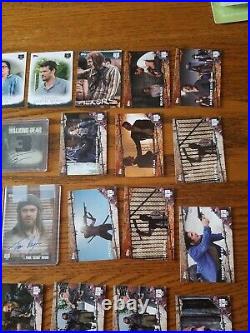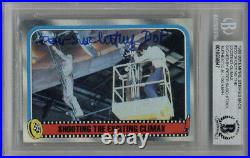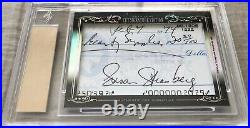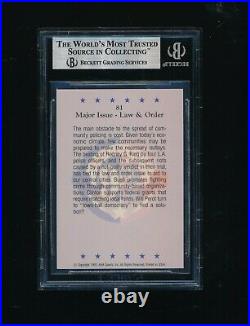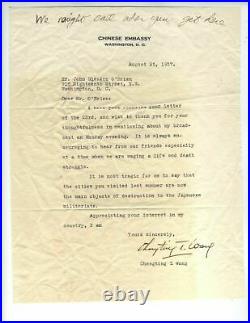


HISTORICALLY IMPORTANT CHINESE LETTER SIGNED BY??? FORMER ACTING PREMIER OF CHINA AND.. Wang, Zhengting (Thomas Cheng-ting Wang)??? Pinyin: Wáng Zhèngtíng; Wade-Giles: Wang Cheng-t’ing, known in English as Chengting Thomas Wang or C. Wang; 7 September 1882 – 21 May 1961. Wang was Ambassador to the United States from 1936 to 1938. Who was Foreign Minister, Minister of Finance, Minister of Justice and acting Premier in governments of the Republic of China in the 1920s. THIS IS A TYPED LETTER DATED AUGUST 25, 1937 SIGNED IN BLACK INK BY CHENGTING T. JOHN GLEASON O’BRIEN VICE-CONSUL OF THE UNITED STATES To ROME FROM MAY, 1919 to June 1920… Later became manager of Branch Number One of the American News Company. The letter references the Japanese militarists creating destruction in China most likely in northwest provinces… John Gleason O’ Brien. 918 Eighteenth Street, N. I have just received your letter. Of the 23rd, and wish to thank you for your. Thoughtfulness in mentioning about my broad. Cast on Monday evening. It is always en. Couraging to hear from our friends especially. At a time when we are waging a life and death. It is most tragic for me to say that. The cities you visited last summer are now. The main objects of destruction to the Japanese. Appreciating your interest in my. Wang, Zhengting (Thomas Cheng-ting Wang)?? Diplomat, politician, social activist, sport activist. Education level: Undergraduate (Liberal Arts). Matriculated year: 1907 FROM UNIVERSITY OF MICHIGAN. , also known as C. Wang, Chengting Thomas Wang, or Chengting Wang, is a famous politician, diplomat, and social activist in China. His contribution to modern China was also recognized in the field of athlete and sports that he is one of the bellwethers in the promotion of Olympics in China and the very first Chinese member of the International Olympic Committee. Born in a Christian family on September 7th, 1882 in Fuhuang, Zhejiang province, Wang was raised in the soil of Western thoughts and ideas. He went to the United States as a liberal arts student at the University of Michigan in 1907. [ii] He then transferred, after one year of enrollment at Michigan, to Yale University where he eventually received his Bachelor of Arts Degree in 1910. Wang served several key positions in the government of the Republic of China including the Chief of Diplomatic Affairs, the Vice-Minister, and later the Minister of Commerce and Industry, the Minister of Foreign Affairs, and the Ambassador to the United States for a period of two years from 1936 to 1938. [iv] Wang also was the secretary of the Chinese Y. During his position as Chief of Diplomatic Affairs, Wang lead the movement on the rescission of unequal treaties with Western powers through soft and pragmatic strategies, or “iron fist covered with rubber, “[v] as he proposed. His efforts have largely protected the Chinese sovereignty and retrieved a certain level of economic autonomy of his country. [vi] Wang is also a lifelong sports activist that he believes the popularization and promotion of sports and physical exercise at the national level can help defending China and improving the international influence of government. [vii] Wang’s long career as a diplomat and legislator inspired writings on comparative government, history, and the state of affairs in China. His experiences contributed to his works, such as An Overview of Modern Chinese Diplomacy, published in 1929. Pinyin: Wáng Zhèngtíng; Wade-Giles: Wang2 Cheng4-t’ing2, known in English as Chengting Thomas Wang or C. Wang; 7 September 1882 – 21 May 1961 was Foreign Minister, Minister of Finance, Minister of Justice and acting Premier in governments of the Republic of China in the 1920s. Wang was born in Fenghua, Zhejiang, and his father was an Anglican minister just outside Shanghai, where Wang attended mission schools before entering the preparatory school for the Peiyang University. After teaching in the Provincial High School in Changsha, Hunan. Wang studied in Tokyo, where he was secretary of the Chinese YMCA, then in 1907, went to the United States to study law at the University of Michigan. [1] He soon transferred to Yale University, graduating in 1910 and being elected to Phi Beta Kappa. He represented the interim Canton government in China’s delegation, headed by Lu Zhengxiang, at the Paris Peace Conference, 1919 after World War I. [3] He and Wellington V K Koo (Gu Weijun), another US-educated lawyer, played prominent roles in presenting the case for returning Shandong to China and in the decision not to sign the Treaty of Versailles because it stipulated the transfer of German rights in Shandong to Japan. [4]:113 Notwithstanding their competitive positions domestically, Wang and Koo joined forces in staunchly promoting the formation of the League of Nations, jointly authoring a pamphlet on the subject. He also founded a Shanghai brokerage house; was chairman or board member of mining, cotton milling, and railroad companies; and was Chairman of the Far Eastern Olympics. As foreign minister, Wang negotiated a settlement with Japan over the Jinan Incident of 1928; with Soviet Russia over the Chinese Eastern Railway in Manchuria; treaties restoring Chinese territory in British Weihaiwei and French Tonkin; and tariff autonomy or commercial agreements with more than a dozen countries, including Japan. Wang was a keen athlete who fervently believed in sports as a vehicle for national development. He represented China at the Far Eastern Championship Games in 1913[6]:210 and was later to be the first Chinese member of the International Olympic Committee. In spite of his successes in nationalist diplomacy, after the Mukden Incident of 1931 in which Japan seized control of China’s Northwest provinces, student protestors targeted Wang for China’s ineffective response. Wang was attacked and hospitalized, and withdrew from public office for a time. He served in various minor government and party capacities during the war, but in 1949 stayed in Hong Kong rather than go to Taiwan with Chiang Kai-shek’s government. Who’s Who in China 4th ed. [18][19][20][21]????????? »(Looking back & looking forward), ????? The Second Sino-Japanese War was a military conflict fought primarily between the Republic of China and the Empire of Japan from July 7, 1937, to September 2, 1945. It began with the Marco Polo Bridge Incident in 1937 in which a dispute between Japanese and Chinese troops escalated into a battle. Some sources in the modern People’s Republic of China date the beginning of the war to the Japanese invasion of Manchuria in 1931. [25] It is known as the War of Resistance Chinese:?????? Pinyin: Zhongguó Kàngrì Zhànzheng; lit. “Chinese War of Resistance Against Japan” in China. China fought Japan with aid from the Soviet Union and the United States. After the Japanese attack on Pearl Harbor in 1941, the war merged with other conflicts of World War II as a major sector known as the China Burma India Theater. Some scholars consider the start of the full-scale Second Sino-Japanese War in 1937 to have been the beginning of World War II. [26][27] The Second Sino-Japanese War was the largest Asian war in the 20th century. [28] It accounted for the majority of civilian and military casualties in the Pacific War, with between 10 and 25 million Chinese civilians and over 4 million Chinese and Japanese military personnel dying from war-related violence, famine, and other causes. The war was the result of a decades-long Japanese imperialist policy to expand its influence politically and militarily in order to secure access to raw material reserves, food, and labor. The period after World War I brought about increasing stress on the Japanese polity. Leftists sought universal suffrage and greater rights for workers. Increasing textile production from Chinese mills was adversely affecting Japanese production. The Great Depression brought about a large slowdown in exports. All of this contributed to militant nationalism, culminating in the rise to power of a militarist fascist faction. This faction was led at its height by the Hideki Tojo cabinet of the Imperial Rule Assistance Association under edict from Emperor Hirohito. In 1931, the Mukden Incident helped spark the Japanese invasion of Manchuria. The Chinese were defeated and Japan created a new puppet state, Manchukuo; many historians cite 1931 as the beginning of the war. [29][30][31] This view has been adopted by the PRC government. From 1931 to 1937, China and Japan continued to skirmish in small, localized engagements, so-called “incidents”. Initially the Japanese scored major victories, capturing Beijing, Shanghai and the Chinese capital of Nanjing in 1937, which resulted in the Rape of Nanjing. After failing to stop the Japanese in the Battle of Wuhan, the Chinese central government was relocated to Chongqing (Chungking) in the Chinese interior. By 1939, after Chinese victories in Changsha and Guangxi, and with Japan’s lines of communications stretched deep into the Chinese interior, the war reached a stalemate. The Japanese were also unable to defeat the Chinese communist forces in Shaanxi, which waged a campaign of sabotage and guerrilla warfare against the invaders. While Japan ruled the large cities, they lacked sufficient manpower to control China’s vast countryside. During this time, Chinese communist forces launched a counter offensive in Central China while Chinese nationalist forces launched a large scale winter offensive. On December 7, 1941, the Japanese attacked Pearl Harbor, and the following day the United States declared war on Japan. The United States began to aid China by airlifting material over the Himalayas after the Allied defeat in Burma that closed the Burma Road. In 1944 Japan launched the invasion, Operation Ichi-Go, that conquered Henan and Changsha. However, this failed to bring about the surrender of Chinese forces. In 1945, the Chinese Expeditionary Force resumed its advance in Burma and completed the Ledo Road linking India to China. At the same time, China launched large counteroffensives in South China and retook West Hunan and Guangxi. Despite continuing to occupy part of China’s territory, Japan eventually surrendered on September 2, 1945, to Allied forces following the atomic bombings of Hiroshima and Nagasaki and the Soviet invasion of Japanese-held Manchuria. The remaining Japanese occupation forces (excluding Manchuria) formally surrendered on September 9, 1945, with the following International Military Tribunal for the Far East convened on April 29, 1946. At the outcome of the Cairo Conference of November 22-26, 1943, the Allies of World War II decided to restrain and punish the aggression of Japan by restoring all the territories that Japan annexed from China, including Manchuria, Taiwan/Formosa, and the Pescadores, to China, and to expel Japan from the Korean Peninsula. China was recognized as one of the Big Four of the Allies during the war and became one of the five permanent members of the United Nations Security Council. Reunification of China (1928). Communist Party of China. Prelude: invasion of Manchuria and Northern China. Course of the war. 1937: Full-scale invasion of China. Battle of Nanjing and Nanjing Massacre. 1939-40: Chinese counterattack and stalemate. First period (July 1937 – October 1938). Second period (October 1938 – December 1941). Relationship between the Nationalists and Communists. Entrance of the Western Allies. Foreign aid and support to China. Involvement of French Indochina. End of the Pacific War and surrender of Japanese troops in China. Post-war struggle and resumption of civil war. Japanese women left behind in China. Korean women left behind in China. Use of chemical and bacteriological weapons. Use of suicide attacks. Generalissimo Chiang Kai-shek, Allied Commander-in-Chief in the China theatre from 1942 to 1945. Part 1 of 7. The beginning of the war. In China, the war is most commonly known as the “War of Resistance against Japan” simplified Chinese:???? , and shortened to the “Resistance against Japan” Chinese:?? Or the “War of Resistance” simplified Chinese:?? It was also called the “Eight Years’ War of Resistance” simplified Chinese:???? , but in 2017 the Chinese Ministry of Education issued a directive stating that textbooks were to refer to the war as the “Fourteen Years’ War of Resistance” simplified Chinese:????? , reflecting a focus on the broader conflict with Japan going back to 1931. [35] It is also referred to as part of the “Global Anti-Fascist War”, which is how World War II is perceived by the Communist Party of China and the PRC government. In Japan, nowadays, the name “Japan-China War” Japanese:???? Romanized: Nitchu Senso is most commonly used because of its perceived objectivity. When the invasion of China proper began in earnest in July 1937 near Beijing, the government of Japan used “The North China Incident” Japanese:???? Romanized: Hokushi Jihen/Kahoku Jihen, and with the outbreak of the Battle of Shanghai the following month, it was changed to “The China Incident” Japanese:???? The word “incident” Japanese:?? Romanized: jihen was used by Japan, as neither country had made a formal declaration of war. From the Japanese perspective was that localizing these conflicts was beneficial in preventing intervention from other nations, particularly the United Kingdom and the United States, which were its primary source of petroleum and steel respectively. A formal expression of these conflicts would potentially lead to American embargo in accordance with the Neutrality Acts of the 1930s. [37] In addition, due to China’s fractured political status, Japan often claimed that China was no longer a recognizable political entity on which war could be declared. In Japanese propaganda, the invasion of China became a crusade Japanese:?? Romanized: seisen, the first step of the “eight corners of the world under one roof” slogan Japanese:???? In 1940, Japanese Prime Minister Fumimaro Konoe launched the Taisei Yokusankai. When both sides formally declared war in December 1941, the name was replaced by “Greater East Asia War” Japanese:????? Although the Japanese government still uses the term “China Incident” in formal documents, [39] the word Shina is considered derogatory by China and therefore the media in Japan often paraphrase with other expressions like “The Japan-China Incident” Japanese:???? Romanized: Nikka Jiken/Nisshi Jiken, which were used by media as early as the 1930s. The name “Second Sino-Japanese War” is not commonly used in Japan as the war it fought with the Qing dynasty in 1894 is called the Qing-Japanese War Japanese:???? Romanized: Nisshin-Senso rather than the First Sino-Japanese War. [40][41][42] The Qing dynasty was on the brink of collapse due to internal revolts and foreign imperialism, while Japan had emerged as a great power through its effective measures of modernization. However, central authority disintegrated and the Republic’s authority succumbed to that of regional warlords, mostly from the former Beiyang Army. Unifying the nation and repelling imperialism seemed a very remote possibility. [44] Some warlords even aligned themselves with various foreign powers in their battles with each other. For example, the warlord Zhang Zuolin of Manchuria from the Fengtian clique openly cooperated with the Japanese for military and economic assistance. In 1915, Japan issued the Twenty-One Demands to extort further political and commercial privilege from China, which was accepted by Yuan Shikai. [46] Following World War I, Japan acquired the German Empire’s sphere of influence in Shandong province, [47] leading to nationwide anti-Japanese protests and mass demonstrations in China. Under the Beiyang government, China remained fragmented and was unable to resist foreign incursions. [48] For the purpose of unifying China and defeating the regional warlords, the Kuomintang (KMT, alternatively known as the Chinese Nationalist Party) in Guangzhou launched the Northern Expedition from 1926 to 1928 with limited assistance from the Soviet Union. Main article: Jinan incident. The National Revolutionary Army (NRA) formed by the KMT swept through southern and central China until it was checked in Shandong, where confrontations with the Japanese garrison escalated into armed conflict. The conflicts were collectively known as the Jinan incident of 1928, during which time the Japanese military violently killed several Chinese officials and fired artillery shells into Jinan. Between 2,000 and 11,000 Chinese and Japanese civilians were believed to have been killed during these conflicts. The Jinan incident severely deteriorated the relations between the Chinese Nationalist government and Japan. Main article: Chinese reunification (1928). As the National Revolutionary Army approached Beijing, Zhang Zuolin decided to retreat back to Manchuria, before he was assassinated by the Kwantung Army in 1928. [52] His son, Zhang Xueliang, took over as the leader of the Fengtian clique in Manchuria. Later in the same year, Zhang decided to declare his allegiance to the Nationalist government in Nanjing under Chiang Kai-shek, and consequently, China was nominally reunified under one government. Main article: Sino-Soviet conflict (1929). The July-November 1929 conflict over the Chinese Eastern Railroad (CER) further increased the tensions in the Northeast that would lead to the Mukden Incident and eventually the Second Sino-Japanese War. The Soviet Red Army victory over Zhang Xueliang’s forces not only reasserted Soviet control over the CER in Manchuria but revealed Chinese military weaknesses that Japanese Kwantung Army officers were quick to note. The Soviet Red Army performance also stunned the Japanese. Manchuria was central to Japan’s East Asia policy. Both the 1921 and 1927 Imperial Eastern Region Conferences reconfirmed Japan’s commitment to be the dominant power in the Northeast. The 1929 Red Army victory shook that policy to the core and reopened the Manchurian problem. By 1930, the Kwantung Army realized they faced a Red Army that was only growing stronger. The time to act was drawing near and Japanese plans to conquer the Northeast were accelerated. In 1930, the Central Plains War broke out across China, involving regional commanders who had fought in alliance with the Kuomintang during the Northern Expedition, and the Nanjing government under Chiang. The Communist Party of China (CPC) previously fought openly against the Nanjing government after the Shanghai massacre of 1927, and they continued to expand during this civil war. The Kuomintang government in Nanjing decided to focus their efforts on suppressing the Chinese Communists through the Encirclement Campaigns, following the policy of “first internal pacification, then external resistance” Chinese:?????? Japanese troops entering Shenyang during the Mukden Incident. The internecine warfare in China provided excellent opportunities for Japan, which saw Manchuria as a limitless supply of raw materials, a market for its manufactured goods (now excluded from the markets of many Western countries as a result of Depression-era tariffs), and a protective buffer state against the Soviet Union in Siberia. [citation needed] Japan invaded Manchuria outright after the Mukden Incident in September 1931. Japan charged that its rights in Manchuria, which had been established as a result of its victory at the end of the Russo-Japanese War, had been systematically violated and there were “more than 120 cases of infringement of rights and interests, interference with business, boycott of Japanese goods, unreasonable taxation, detention of individuals, confiscation of properties, eviction, demand for cessation of business, assault and battery, and the oppression of Korean residents”. After five months of fighting, Japan established the puppet state of Manchukuo in 1932, and installed the last Emperor of China, Puyi, as its puppet ruler. Militarily too weak to challenge Japan directly, China appealed to the League of Nations for help. The League’s investigation led to the publication of the Lytton Report, condemning Japan for its incursion into Manchuria, causing Japan to withdraw from the League of Nations. No country took action against Japan beyond tepid censure. Incessant fighting followed the Mukden Incident. In 1932, Chinese and Japanese troops fought the January 28 Incident battle. This resulted in the demilitarisation of Shanghai, which forbade the Chinese from deploying troops in their own city. In Manchukuo there was an ongoing campaign to defeat the Anti-Japanese Volunteer Armies that arose from widespread outrage over the policy of non-resistance to Japan. Japanese Empire’s territorial expansion. In 1933, the Japanese attacked the Great Wall region. The Tanggu Truce established in its aftermath, gave Japan control of Jehol province as well as a demilitarized zone between the Great Wall and Beiping-Tianjin region. Japan aimed to create another buffer zone between Manchukuo and the Chinese Nationalist government in Nanjing. Japan increasingly exploited China’s internal conflicts to reduce the strength of its fractious opponents. Even years after the Northern Expedition, the political power of the Nationalist government was limited to just the area of the Yangtze River Delta. Other sections of China were essentially in the hands of local Chinese warlords. Japan sought various Chinese collaborators and helped them establish governments friendly to Japan. This policy was called the Specialization of North China Chinese:????? Pinyin: huábeitèshuhùa, more commonly known as the North China Autonomous Movement. The northern provinces affected by this policy were Chahar, Suiyuan, Hebei, Shanxi, and Shandong. This Japanese policy was most effective in the area of what is now Inner Mongolia and Hebei. In 1935, under Japanese pressure, China signed the He-Umezu Agreement, which forbade the KMT from conducting party operations in Hebei. In the same year, the Chin-Doihara Agreement was signed expelling the KMT from Chahar. Thus, by the end of 1935 the Chinese government had essentially abandoned northern China. In its place, the Japanese-backed East Hebei Autonomous Council and the Hebei-Chahar Political Council were established. There in the empty space of Chahar the Mongol Military Government was formed on May 12, 1936. Japan provided all the necessary military and economic aid. Afterwards Chinese volunteer forces continued to resist Japanese aggression in Manchuria, and Chahar and Suiyuan. Generalissimo Chiang Kai-shek announced the Kuomintang policy of resistance against Japan at Lushan on July 10, 1937, three days after the Marco Polo Bridge Incident. On the night of July 7, 1937, Chinese and Japanese troops exchanged fire in the vicinity of the Marco Polo (or Lugou) Bridge, a crucial access-route to Beijing. What began as confused, sporadic skirmishing soon escalated into a full-scale battle in which Beijing and its port city of Tianjin fell to Japanese forces (July-August 1937). On July 29, some 5,000 troops of the 1st and 2nd Corps of the East Hopei Army mutinied, turning against the Japanese garrison. In addition to Japanese military personnel, some 260 civilians living in Tongzhou in accordance with the Boxer Protocol of 1901, were killed in the uprising (predominantly Japanese including the police force and also some ethnic Koreans). The Chinese then set fire to and destroyed much of the city. Only around 60 Japanese civilians survived, who provided both journalists and later historians with firsthand witness accounts. As a result of the violence of the mutiny against Japanese civilians, the Tungchow mutiny, as it came to be called, strongly shook public opinion within Japan. Main article: Battle of Shanghai. Japanese landing near Shanghai, November 1937. The Imperial General Headquarters (GHQ) in Tokyo, content with the gains acquired in northern China following the Marco Polo Bridge Incident, initially showed reluctance to escalate the conflict into full-scale war. The KMT, however, determined that the “breaking point” of Japanese aggression had been reached. Chiang Kai-shek quickly mobilized the central government’s army and air force, placed them under his direct command, and laid siege to the Japanese area of Shanghai International Settlement, where 30,000 Japanese civilians lived with 30,000 troops on August 12, 1937. An NRA soldiers’ machine gun nest in Shanghai. On August 13, 1937, Kuomintang soldiers and warplanes attacked Japanese Marine positions in Shanghai, leading to the Battle of Shanghai. On August 14, Kuomintang planes accidentally bombed the Shanghai International Settlement, which led to more than 3,000 civilian deaths. [57] In the three days from August 14 through 16, 1937, the Imperial Japanese Navy (IJN) sent many sorties of the then-advanced long-ranged G3M medium-heavy land-based bombers and assorted carrier-based aircraft with the expectation of destroying the Chinese Air Force. However, the Imperial Japanese Navy encountered unexpected resistance from the defending Chinese Hawk III and P-26/281 Peashooter fighter squadrons; suffering heavy (50%) losses from the defending Chinese pilots (August 14 was subsequently commemorated by the KMT as China’s Air Force Day). Japanese troops in the ruins of Shanghai. The skies of China had become a testing zone for advanced biplane and new-generation monoplane combat-aircraft designs. The introduction of the advanced A5M “Claude” fighters into the Shanghai-Nanjing theater of operations, beginning on September 18, 1937, helped the Japanese achieve a certain level of air superiority. [61][62] However the few experienced Chinese veteran pilots, even in their older and slower biplanes, proved more than able to hold their own against the sleek A5Ms in dogfights, and it also proved to be a battle of attrition against the Chinese Air Force. [63][64] At the start of the battle, the local strength of the NRA was around five divisions, or about 70,000 troops, while local Japanese forces comprised about 6,300 marines. [65] On August 23, Japanese Army reinforcements succeeded in landing in northern Shanghai. The Imperial Japanese Army (IJA) ultimately committed over 200,000 troops, along with numerous naval vessels and aircraft, to capture the city. After more than three months of intense fighting, their casualties far exceeded initial expectations. [66] On October 26, the Japanese Army captured Dachang, an important strong-point within Shanghai, and on November 5, additional reinforcements of Japan landed from Hangzhou Bay. Finally, on November 9, the NRA began a general retreat. Main articles: Battle of Nanjing and Nanjing Massacre. Soviet embassy in Nanjing is being burned down by arson on January 1, 1938. A Chinese POW about to be beheaded by a Japanese officer with a shin gunto. Building on the hard-won victory in Shanghai, the IJA captured the KMT capital city of Nanjing (December 1937) and Northern Shanxi (September-November 1937). These campaigns involved approximately 350,000 Japanese soldiers, and considerably more Chinese. Historians estimate that between December 13, 1937, and late January 1938, Japanese forces killed an estimated 200,000 to 300,000 Chinese (mostly civilians) in the “Nanjing Massacre” (also known as the “Rape of Nanjing”), after its fall. In 2005, a history textbook prepared by the Japanese Society for History Textbook Reform which had been approved by the government in 2001, sparked huge outcry and protests in China and Korea. It referred to the Nanjing Massacre as an “incident”, glossed over the issue of comfort women, and made only brief references to the death of Chinese soldiers and civilians in Nanjing. [67] A copy of the 2005 version of a junior high school textbook titled New History Textbook found that there is no mention of the “Nanjing Massacre” or the “Nanjing Incident”. Indeed, the only one sentence that referred to this event was: “they [the Japanese troops] occupied that city in December”. [68] As of 2015, some right-wing Japanese negationists deny that the massacre occurred, and have successfully lobbied for revision and exclusion of information in Japanese schoolbooks. At the start of 1938, the leadership in Tokyo still hoped to limit the scope of the conflict to occupy areas around Shanghai, Nanjing and most of northern China. They thought this would preserve strength for an anticipated showdown with the Soviet Union, but by now the Japanese government and GHQ had effectively lost control of the Japanese army in China. With many victories achieved, Japanese field generals escalated the war in Jiangsu in an attempt to wipe out Chinese resistance, but were defeated at the Battle of Taierzhuang (March-April 1938). Afterwards the IJA changed its strategy and deployed almost all of its existing armies in China to attack the city of Wuhan, which had become the political, economic and military center of rump China, in hopes of destroying the fighting strength of the NRA and of forcing the KMT government to negotiate for peace. [70] The Japanese captured Wuhan on October 27, 1938, forcing the KMT to retreat to Chongqing (Chungking), but Chiang Kai-shek still refused to negotiate, saying he would only consider talks if Japan agreed to withdraw to the pre-1937 borders. In 1937, the Japanese Imperial Army quickly marched into the heart of Chinese territory. On June 6, they captured Kaifeng, the capital of Henan, and threatened to take Zhengzhou, the junction of the Pinghan and Longhai railways. To prevent Japanese advances in western and southern China, Chiang Kai-shek, at the suggestion of Chen Guofu, ordered the opening of the dikes on the Yellow River near Zhengzhou. The original plan was to destroy the dike in Zhaokou, but due to difficulties in that place, the Huayuankou dike on the south bank was destroyed on June 5 and June 7 by excavation, with flood waters over Henan, Anhui, and Jiangsu. The floods covered and destroyed thousands of square kilometers of agricultural land and displaced the mouth of the Yellow River hundreds of miles to the south. Thousands of villages were flooded or destroyed and several million villagers were expelled from their homes. About 800,000 drowned and an additional 10 million became refugees. Damage to plantations also affected the population which generated later hunger. With Japanese casualties and costs mounting, the Imperial General Headquarters attempted to break Chinese resistance by ordering the air branches of their navy and army to launch the war’s first massive air raids on civilian targets. Japanese raiders hit the Kuomintang’s newly established provisional capital of Chongqing and most other major cities in unoccupied China, leaving millions dead, injured, and homeless. Map showing the extent of Japanese occupation in 1941 (in red). Japanese occupation (red) of eastern China near the end of the war, and Communist guerrilla bases (striped). From the beginning of 1939, the war entered a new phase with the unprecedented defeat of the Japanese at Battle of Suixian-Zaoyang, 1st Battle of Changsha, Battle of South Guangxi and Battle of Zaoyi. These outcomes encouraged the Chinese to launch their first large-scale counter-offensive against the IJA in early 1940; however, due to its low military-industrial capacity and limited experience in modern warfare, this offensive was defeated. Afterwards Chiang could not risk any more all-out offensive campaigns given the poorly trained, under-equipped, and disorganized state of his armies and opposition to his leadership both within the Kuomintang and in China in general. He had lost a substantial portion of his best trained and equipped troops in the Battle of Shanghai and was at times at the mercy of his generals, who maintained a high degree of autonomy from the central KMT government. During the offensive, Hui forces in Suiyuan under generals Ma Hongbin and Ma Buqing routed the Imperial Japanese Army and their puppet Inner Mongol forces and prevented the planned Japanese advance into northwest China. Ma Hongbin’s father Ma Fulu had fought against Japanese in the Boxer Rebellion. General Ma Biao led Hui, Salar and Dongxiang cavalry to defeat the Japanese at the Battle of Huaiyang. [71][72][73][74][75][76][77][78][79] Ma Biao fought against the Japanese in the Boxer Rebellion. Wang Jingwei and officers of the Collaborationist Chinese Army. After 1940, the Japanese encountered tremendous difficulties in administering and garrisoning the seized territories, and tried to solve its occupation problems by implementing a strategy of creating friendly puppet governments favourable to Japanese interests in the territories conquered, most prominently the Nanjing Nationalist Government headed by former KMT premier Wang Jingwei. However, atrocities committed by the Imperial Japanese Army, as well as Japanese refusal to delegate any real power, left the puppets very unpopular and largely ineffective. The only success the Japanese had was to recruit a large Collaborationist Chinese Army to maintain public security in the occupied areas. Type 92 Heavy Armoured Car near Nanjing, 1941. By 1941, Japan held most of the eastern coastal areas of China and Vietnam, but guerilla fighting continued in these occupied areas. Japan had suffered high casualties from unexpectedly stubborn Chinese resistance, and neither side could make any swift progress in the manner of Nazi Germany in Western Europe. The basis of Chinese strategy before the entrance of the Western Allies can be divided into two periods as follows. First Period: July 7, 1937 (Battle of Lugou Bridge) – October 25, 1938 (end of the Battle of Wuhan with the fall of the city). Second Period: October 25, 1938 (following the Fall of Wuhan) – December 1941 (before the Allies’ declaration of war on Japan). Unlike Japan, China was unprepared for total war and had little military-industrial strength, no mechanized divisions, and few armoured forces. [80] Up until the mid-1930s, China had hoped that the League of Nations would provide countermeasures to Japan’s aggression. In addition, the Kuomintang (KMT) government was mired in a civil war against the Communist Party of China (CPC), as Chiang Kai-shek was quoted: “the Japanese are a disease of the skin, the Communists are a disease of the heart”. The Second United Front between the KMT and CPC was never truly unified, as each side was preparing for a showdown with the other once the Japanese were driven out. Chinese soldiers in house-to-house fighting in the Battle of Taierzhuang, March-April 1938. Even under these extremely unfavorable circumstances, Chiang realized that to win support from the United States and other foreign nations, China had to prove it was capable of fighting. Knowing a hasty retreat would discourage foreign aid, Chiang resolved to make a stand at Shanghai, using the best of his German-trained divisions to defend China’s largest and most industrialized city from the Japanese. The battle lasted over three months, saw heavy casualties on both sides, and ended with a Chinese retreat towards Nanjing, but proved that China would not be easily defeated and showed its determination to the world. The battle became an enormous morale booster for the Chinese people, as it decisively refuted the Japanese boast that Japan could conquer Shanghai in three days and China in three months. Afterwards, China began to adopt the Fabian strategy of “trading space for time” simplified Chinese:??????? The Chinese army would put up fights to delay the Japanese advance to northern and eastern cities, allowing the home front, with its professionals and key industries, to retreat west into Chongqing. As a result of Chinese troops’ scorched earth strategies, in which dams and levees were intentionally sabotaged to create massive flooding which causes thousands of death and many more seeking refuge. National Revolutionary Army soldiers march to the front in 1939. During this period, the main Chinese objective was to drag out the war for as long as possible in a war of attrition, thereby exhausting Japanese resources while building up Chinese military capacity. American general Joseph Stilwell called this strategy “winning by outlasting”. The NRA adopted the concept of “magnetic warfare” to attract advancing Japanese troops to definite points where they were subjected to ambush, flanking attacks, and encirclements in major engagements. The most prominent example of this tactic was the successful defense of Changsha in 1939 (and again in 1941), in which heavy casualties were inflicted on the IJA. Local Chinese resistance forces, organized separately by both the communists and KMT, continued their resistance in occupied areas to pester the enemy and make their administration over the vast land area of China difficult. In 1940, the Chinese Red Army launched a major offensive in north China, destroying railways and a major coal mine. These constant harassment and sabotage operations deeply frustrated the Imperial Japanese Army and led them to employ the “Three Alls Policy” (kill all, loot all, burn all)???? Hanyu Pinyin: Sanguang Zhèngcè, Japanese On: Sanko Seisaku. It was during this period that the bulk of Japanese war crimes were committed. By 1941, Japan had occupied much of north and coastal China, but the KMT central government and military had retreated to the western interior to continue their resistance, while the Chinese communists remained in control of base areas in Shaanxi. In the occupied areas, Japanese control was mainly limited to railroads and major cities (“points and lines”). They did not have a major military or administrative presence in the vast Chinese countryside, where Chinese guerrillas roamed freely. Eighth Route Army Commander Zhu De with KMT Blue Sky White Sun Emblem cap. After the Mukden Incident in 1931, Chinese public opinion was strongly critical of Manchuria’s leader, the “young marshal” Zhang Xueliang, for his nonresistance to the Japanese invasion, even though the Kuomintang central government was also responsible for this policy, giving Zhang an order to “improvise” while not offering support. After losing Manchuria to the Japanese, Zhang and his Northeast Army were given the duty of suppressing the Red Army of the Chinese Communist Party (CPC) in Shaanxi after their Long March. This resulted in great casualties for his Northeast Army, which received no support in manpower or weaponry from Chiang Kai-shek. On December 12, 1936, a deeply disgruntled Zhang Xueliang kidnapped Chiang Kai-shek in Xi’an, hoping to force an end to the conflict between KMT and CPC. To secure the release of Chiang, the KMT agreed to a temporary end to the Chinese Civil War and, on December 24, the creation of a United Front between the CPC and KMT against Japan. The alliance having salutary effects for the beleaguered CPC, they agreed to form the New Fourth Army and the 8th Route Army and place them under the nominal control of the NRA. The CPC’s Red Army fought alongside KMT forces during the Battle of Taiyuan, and the high point of their cooperation came in 1938 during the Battle of Wuhan. 115th Division of the Eighth Route Army Commander-in-chief Lin Biao in NRA uniform. Despite Japan’s steady territorial gains in northern China, the coastal regions, and the rich Yangtze River Valley in central China, the distrust between the two antagonists was scarcely veiled. The uneasy alliance began to break down by late 1938, partially due to the Communists’ aggressive efforts to expand their military strength by absorbing Chinese guerrilla forces behind Japanese lines. Chinese militia who refused to switch their allegiance were often labelled “collaborators” and attacked by CPC forces. For example, the Red Army led by He Long attacked and wiped out a brigade of Chinese militia led by Zhang Yin-wu in Hebei in June 1939. [81] Starting in 1940, open conflict between Nationalists and Communists became more frequent in the occupied areas outside of Japanese control, culminating in the New Fourth Army Incident in January 1941. Afterwards, the Second United Front completely broke down and Chinese Communists leader Mao Zedong outlined the preliminary plan for the CPC’s eventual seizure of power from Chiang Kai-shek. Mao began his final push for consolidation of CPC power under his authority, and his teachings became the central tenets of the CPC doctrine that came to be formalized as “Mao Zedong Thought”. War declaration against Japan by the Chongqing Nationalist Government in 9 December 1941. Generalissimo Chiang Kai-shek and his wife Madame Chiang with Lieutenant General Joseph Stilwell in 1942, Burma. File:Madamn Chiang Kaishek US Congress speech(1). On February 18, 1943, Madame Chiang Kai-shek addressed both houses of the US Congress. A US poster advocating helping China fight on. Following the attack on Pearl Harbor, the United States declared war against Japan, and within days China joined the Allies in formal declaration of war against Japan, Germany and Italy. [83] As the Western Allies entered the war against Japan, the Sino-Japanese War would become part of a greater conflict, the Pacific theatre of World War II. Almost immediately, Chinese troops achieved another decisive victory in the Battle of Changsha, which earned the Chinese government much prestige from the Western Allies. Roosevelt referred to the United States, United Kingdom, Soviet Union and China as the world’s “Four Policemen”, elevating the international status of China to an unprecedented height after the century of humiliation at the hands of various imperialist powers. Knowledge of Japanese naval movements in the Pacific was provided to the American Navy by the Sino-American Cooperative Organization (SACO) which was run by the Chinese intelligence head Dai Li. [84] Philippine and Japanese ocean weather was affected by weather originating near northern China. [85] The base of SACO located in Yangjiashan. Chiang Kai-shek continued to receive supplies from the United States. However, in contrast to the Arctic supply route to the Soviet Union which stayed open through most of the war, sea routes to China and the Yunnan-Vietnam Railway had been closed since 1940. Therefore, between the closing of the Burma Road in 1942 and its re-opening as the Ledo Road in 1945, foreign aid was largely limited to what could be flown in over “The Hump”. In Burma, on April 16, 1942, 7,000 British soldiers were encircled by the Japanese 33rd Division during the Battle of Yenangyaung and rescued by the Chinese 38th Division. [87] After the Doolittle Raid, the Imperial Japanese Army conducted a massive sweep through Zhejiang and Jiangxi of China, now known as the Zhejiang-Jiangxi Campaign, with the goal of finding the surviving American airmen, applying retribution on the Chinese who aided them and destroying air bases. The operation started May 15, 1942, with 40 infantry battalions and 15-16 artillery battalions but was repelled by Chinese forces in September. [88] During this campaign, the Imperial Japanese Army left behind a trail of devastation and had also spread cholera, typhoid, plague and dysentery pathogens. Chinese estimates put the death toll at 250,000 civilians [89][90][91] This is also when the largely forgotten Chinese famine of 1942-43 happened due to a lack of food due to droughts and locusts invading the area. Most of China’s industry had already been captured or destroyed by Japan, and the Soviet Union refused to allow the United States to supply China through Kazakhstan into Xinjiang as the Xinjiang warlord Sheng Shicai had turned anti-Soviet in 1942 with Chiang’s approval. For these reasons, the Chinese government never had the supplies and equipment needed to mount major counter-offensives. Despite the severe shortage of matériel, in 1943, the Chinese were successful in repelling major Japanese offensives in Hubei and Changde. Chiang was named Allied commander-in-chief in the China theater in 1942. American general Joseph Stilwell served for a time as Chiang’s chief of staff, while simultaneously commanding American forces in the China-Burma-India Theater. For many reasons, relations between Stilwell and Chiang soon broke down. Many historians such as Barbara W. Tuchman have suggested it was largely due to the corruption and inefficiency of the Kuomintang (KMT) government, while others (such as Ray Huang and Hans van de Ven) have depicted it as a more complicated situation. Stilwell had a strong desire to assume total control of Chinese troops and pursue an aggressive strategy, while Chiang preferred a patient and less expensive strategy of outwaiting the Japanese. Chiang continued to maintain a defensive posture despite Allied pleas to actively break the Japanese blockade, because China had already suffered tens of millions of war casualties and believed that Japan would eventually capitulate in the face of America’s overwhelming industrial output. For these reasons the other Allies gradually began to lose confidence in the Chinese ability to conduct offensive operations from the Asian mainland, and instead concentrated their efforts against the Japanese in the Pacific Ocean Areas and South West Pacific Area, employing an island hopping strategy. Generalissimo Chiang Kai-shek, Franklin D. Roosevelt, and Winston Churchill met at the Cairo Conference in 1943 during World War II. Longstanding differences in national interest and political stance among China, the United States, and the United Kingdom remained in place. British Prime Minister Winston Churchill was reluctant to devote British troops, many of whom had been routed by the Japanese in earlier campaigns, to the reopening of the Burma Road; Stilwell, on the other hand, believed that reopening the road was vital, as all China’s mainland ports were under Japanese control. The Allies’ “Europe First” policy did not sit well with Chiang, while the later British insistence that China send more and more troops to Indochina for use in the Burma Campaign was seen by Chiang as an attempt to use Chinese manpower to defend British colonial holdings. Chiang also believed that China should divert its crack army divisions from Burma to eastern China to defend the airbases of the American bombers that he hoped would defeat Japan through bombing, a strategy that American general Claire Lee Chennault supported but which Stilwell strongly opposed. In addition, Chiang voiced his support of Indian independence in a 1942 meeting with Mahatma Gandhi, which further soured the relationship between China and the United Kingdom. American and Canadian-born Chinese were recruited to act as covert operatives in Japanese-occupied China (Canadian-born Chinese who had not been granted citizenship were trained by the British army). Employing their racial background as a disguise, their mandate was to blend in with local citizens and wage a campaign of sabotage. Activities focused on destruction of Japanese transportation of supplies (signaling bomber destruction of railroads, bridges). [94] Chinese forces invaded northern Burma in late 1943 besieged Japanese troops in Myitkyina and captured Mount Song. [95] The British and Commonwealth forces had their operation in Mission 204 which attempted to provide assistance to the Chinese Nationalist Army. [96] The first phase in 1942 under command of SOE achieved very little, but lessons were learned and a second more successful phase, commenced in February 1943 under British Military command, was conducted before the Japanese Operation Ichi-Go offensive in 1944 compelled evacuation. The United States saw the Chinese theater as a means to tie up a large number of Japanese troops, as well as being a location for American airbases from which to strike the Japanese home islands. In 1944, with the Japanese position in the Pacific deteriorating rapidly, the IJA mobilized over 500,000 men and launched Operation Ichi-Go, their largest offensive of World War II, to attack the American airbases in China and link up the railway between Manchuria and Vietnam. This brought major cities in Hunan, Henan and Guangxi under Japanese occupation. The failure of Chinese forces to defend these areas encouraged Stilwell to attempt to gain overall command of the Chinese army, and his subsequent showdown with Chiang led to his replacement by Major General Albert Coady Wedemeyer. By the end of 1944 Chinese troops under the command of Sun Li-jen attacking from India, and those under Wei Lihuang attacking from Yunnan, joined forces in Mong-Yu, successfully driving the Japanese out of North Burma and securing the Ledo Road, China’s vital supply artery. [98] In Spring 1945 the Chinese launched offensives that retook Hunan and Guangxi. With the Chinese army progressing well in training and equipment, Wedemeyer planned to launch Operation Carbonado in summer 1945 to retake Guangdong, thus obtaining a coastal port, and from there drive northwards toward Shanghai. However, the atomic bombings of Hiroshima and Nagasaki and Soviet invasion of Manchuria hastened Japanese surrender and these plans were not put into action. Further information: Japanese in the Chinese resistance to the Empire of Japan. Germany and the Soviet Union provided aid to China at the start of the Second Sino-Japanese War. By 1940 the United States had become China’s main diplomatic, financial and military supporter. Kung and Adolf Hitler in Berlin. More than half of German arms exports during its rearmament period were to China. Germany sent military advisers such as Alexander von Falkenhausen to China to help the KMT government reform its armed forces. Some divisions began training to German standards and were to form the core of modernized forces in the NRA. While 30 German-trained divisions were proposed originally, the plan failed to materialize as Germany withdrew its support in 1938 in favor of an alliance with Japan against the Soviet Union, from a Nazi-Japanese pact signed nearly two years previously. I-16 with Chinese insignia. I-16 was the main fighter plane used by the Chinese Air Force and Soviet volunteers. The Soviet Union defeated Japan in the Battles of Khalkhin Gol in May – September 1939, leaving the Japanese reluctant to fight the Soviets again. [101] After Germany and Japan signed the anti-communist Anti-Comintern Pact, the Soviet Union hoped to keep China fighting, in order to deter a Japanese invasion of Siberia and save itself from a two-front war. In September 1937, they signed the Sino-Soviet Non-Aggression Pact and approved Operation Zet, the formation of a secret Soviet volunteer air force, in which Soviet technicians upgraded and ran some of China’s transportation systems. Bombers, fighters, supplies and advisors arrived, including Soviet general Vasily Chuikov, future victor in the Battle of Stalingrad. In April 1941, Soviet aid ended with the Soviet-Japanese Neutrality Pact and the beginning of the Great Patriotic War. This pact enabled the Soviet Union to avoid fighting against Germany and Japan at the same time. In August 1945, the Soviet Union annulled the neutrality pact with Japan and invaded Manchuria, Inner Mongolia, the Kuril Islands, and northern Korea. The Soviets also continued to support the Chinese Communist Party. In total, 3,665 Soviet advisors and pilots served in China, [102] and 227 of them died fighting there. Flying Tigers Commander Claire Lee Chennault. From December 1937, events such as the Japanese attack on USS Panay and the Nanjing Massacre swung public opinion in the West sharply against Japan and increased their fear of Japanese expansion, which prompted the United States, the United Kingdom, and France to provide loan assistance for war supply contracts to China. Australia also prevented a Japanese government-owned company from taking over an iron mine in Australia, and banned iron ore exports in 1938. [104] However, in July 1939, negotiations between Japanese Foreign Minister Arita Khatira and the British Ambassador in Tokyo, Robert Craigie, led to an agreement by which Great Britain recognized Japanese conquests in China. At the same time, the US government extended a trade agreement with Japan for six months, then fully restored it. A “blood chit” issued to American Volunteer Group pilots requesting all Chinese to offer rescue and protection. Japan invaded and occupied the northern part of French Indochina (present-day Vietnam, Laos, Cambodia) in September 1940 to prevent China from receiving the 10,000 tons of materials delivered monthly by the Allies via the Haiphong-Yunnan Fou Railway line. On June 22, 1941, Germany attacked the Soviet Union. In spite of non-aggression pacts or trade connections, Hitler’s assault threw the world into a frenzy of re-aligning political outlooks and strategic prospects. On July 21, Japan occupied the southern part of French Indochina (southern Vietnam and Cambodia), contravening a 1940 “gentlemen’s agreement” not to move into southern French Indochina. From bases in Cambodia and southern Vietnam, Japanese planes could attack Malaya, Singapore, and the Dutch East Indies. As the Japanese occupation of northern French Indochina in 1940 had already cut off supplies from the West to China, the move into southern French Indochina was viewed as a direct threat to British and Dutch colonies. Many principal figures in the Japanese government and military (particularly the navy) were against the move, as they foresaw that it would invite retaliation from the West. Free Thai, American and Chinese military officers in China during the war. On July 24, 1941, Roosevelt requested Japan withdraw all its forces from Indochina. Two days later the US and the UK began an oil embargo; two days after that the Netherlands joined them. This was a decisive moment in the Second Sino-Japanese War. The loss of oil imports made it impossible for Japan to continue operations in China on a long term basis. It set the stage for Japan to launch a series of military attacks against the Allies, including the attack on Pearl Harbor on December 7, 1941. File:Flying Tigers Bite Back. US Air Forces video: Flying Tigers Bite Back. In mid-1941, the United States government financed the creation of the American Volunteer Group (AVG), or Flying Tigers, to replace the withdrawn Soviet volunteers and aircraft. Contrary to popular perception, the Flying Tigers did not enter actual combat until after the United States had declared war on Japan. Led by Claire Lee Chennault, their early combat success of 300 kills against a loss of 12 of their newly introduced shark painted P-40 fighters heavily armed with 6X50 caliber machine guns and very fast diving speeds earned them wide recognition at a time when the Chinese Air Force and Allies in the Pacific and SE Asia were suffering heavy losses, and soon afterwards their “boom and zoom” high-speed hit-and-run dissimilar air combat tactics would be adopted by the United States Army Air Forces. The Sino-American Cooperative Organization[108][109][110] was an organization created by the SACO Treaty signed by the Republic of China and the United States of America in 1942 that established a mutual intelligence gathering entity in China between the respective nations against Japan. It operated in China jointly along with the Office of Strategic Services (OSS), America’s first intelligence agency and forerunner of the CIA while also serving as joint training program between the two nations. Among all the wartime missions that Americans set up in China, SACO was the only one that adopted a policy of “total immersion” with the Chinese. The “Rice Paddy Navy” or “What-the-Hell Gang” operated in the China-Burma-India theater, advising and training, forecasting weather and scouting landing areas for USN fleet and Gen Claire Chennault’s 14th AF, rescuing downed American flyers, and intercepting Japanese radio traffic. An underlying mission objective during the last year of war was the development and preparation of the China coast for Allied penetration and occupation. The Foochow (Fujian Province) was scouted as a potential staging area and springboard for the future military landing of Allies of World War II to Japan. In February 1941 a Sino-British agreement was forged whereby British troops would assist the Chinese “Surprise Troops” units of guerrillas already operating in China, and China would assist Britain in Burma. A British-Australian commando operation, Mission 204, was initialized in February 1942 to provide training to Chinese guerilla troops. The mission conducted two operations, mostly in the provinces of Yunnan and Jiangxi. The first phase achieved very little but a second more successful phase was conducted before withdrawal. Commandos working with the Free Thai Movement also operated in China, mostly while on their way into Thailand. See also: Japanese invasion of French Indochina and Japanese coup d’état in French Indochina. The Chinese Kuomintang also supported the Vietnamese Vi? Ng (VNQDD) in its battle against French and Japanese imperialism. In Guangxi, Chinese military leaders were organizing Vietnamese nationalists against the Japanese. The VNQDD had been active in Guangxi and some of their members had joined the KMT army. [114] Under the umbrella of KMT activities, a broad alliance of nationalists emerged. With Ho at the forefront, the Viet Nam Doc Lap Dong Minh Hoi (Vietnamese Independence League, usually known as the Viet Minh) was formed and based in the town of Jingxi. [114] The pro-VNQDD nationalist Ho Ngoc Lam, a KMT army officer and former disciple of Phan B? I Châu, [115] was named as the deputy of Ph? Ng, later to be Ho’s Prime Minister. The front was later broadened and renamed the Viet Nam Giai Phong Dong Minh (Vietnam Liberation League). The Viet Nam Revolutionary League was a union of various Vietnamese nationalist groups, run by the pro Chinese VNQDD. Chinese KMT General Zhang Fakui created the league to further Chinese influence in Indochina, against the French and Japanese. Its stated goal was for unity with China under the Three Principles of the People, created by KMT founder Dr. Sun and opposition to Japanese and French Imperialists. [116][117] The Revolutionary League was controlled by Nguyen Hai Than, who was born in China and could not speak Vietnamese. General Zhang shrewdly blocked the Communists of Vietnam, and Ho Chi Minh from entering the league, as Zhang’s main goal was Chinese influence in Indochina. [118] The KMT utilized these Vietnamese nationalists during World War II against Japanese forces. Roosevelt, through General Stilwell, privately made it clear that they preferred that the French not reacquire French Indochina (modern day Vietnam, Cambodia, and Laos) after the war was over. Roosevelt offered Chiang Kai-shek control of all of Indochina. It was said that Chiang Kai-shek replied: Under no circumstances! [120] The Chinese used the VNQDD, the Vietnamese branch of the Chinese Kuomintang, to increase their influence in French Indochina and to put pressure on their opponents. [121] Chiang Kai-shek threatened the French with war in response to manoeuvering by the French and Ho Chi Minh’s forces against each other, forcing them to come to a peace agreement. Following France’s agreement to these demands, the withdrawal of Chinese troops began in March 1946. [122][123][124][125]. Rebellion occurred in the Xinjiang province in 1937 when a pro-Soviet General Sheng Shicai invaded the province accompanied by Soviet troops. The invasion was resisted by General Ma Hushan of the KMT 36th Division. General Ma Hushan was expecting help from Nanjing, as he exchanged messages with Chiang regarding the Soviet attack. But, both the Second Sino-Japanese War and the Xinjiang War erupted simultaneously leaving Chiang and Ma Hushan each on their own to confront the Japanese and Soviet forces. The Republic of China government was fully aware of the Soviet invasion of Xinjiang province, and Soviet troops moving around Xinjiang and Gansu, but it was forced to mask these maneuvers to the public as “Japanese propaganda” to avoid an international incident and for continued military supplies from the Soviets. Because the pro-Soviet governor Sheng Shicai controlled Xinjiang, which was garrisoned with Soviet troops in Turfan, the Chinese government had to keep troops stationed there as well. General Ma Buqing was in virtual control of the Gansu corridor at that time. [127] Ma Buqing had earlier fought against the Japanese, but because the Soviet threat was great, Chiang changed Ma’s position, in July 1942, by instructing Ma to move 30,000 of his troops to the Tsaidam marsh in the Qaidam Basin of Qinghai. [128][129] Chiang named Ma as Reclamation Commissioner, to threaten Sheng Shicai’s southern flank in Xinjiang, which bordered Tsaidam. After Ma evacuated his positions in Gansu, Kuomintang troops from central China flooded the area, and infiltrated Soviet occupied Xinjiang, gradually reclaiming it and forcing Sheng Shicai to break with the Soviets. The Kuomintang ordered Ma Bufang several times to march his troops into Xinjiang to intimidate the pro-Soviet Governor Sheng Shicai. This helped provide protection for Chinese settling in Xinjiang. The Ili Rebellion broke out in Xinjiang when the Kuomintang Hui Officer Liu Bin-Di was killed while fighting Turkic Uyghur rebels in November 1944. The Soviet Union supported the Turkic rebels against the Kuomintang, and Kuomintang forces were fighting back. Main article: Chinese ethnic minorities in the Second Sino-Japanese War. Japan attempted to reach out to Chinese ethnic minorities in order to rally them to their side against the Han Chinese, but only succeeded with certain Manchu, Mongol, Uyghur and Tibetan elements. The Japanese attempt to get the Muslim Hui people on their side failed, as many Chinese generals such as Bai Chongxi, Ma Hongbin, Ma Hongkui, and Ma Bufang were Hui. The Japanese attempted to approach Ma Bufang but were unsuccessful in making any agreement with him. [132] Ma Bufang ended up supporting the anti-Japanese Imam Hu Songshan, who prayed for the destruction of the Japanese. [133] Ma became chairman (governor) of Qinghai in 1938 and commanded a group army. He was appointed because of his anti-Japanese inclinations, [134] and was such an obstruction to Japanese agents trying to contact the Tibetans that he was called an “adversary” by a Japanese agent. Hui cemeteries were destroyed for military reasons. [136] Many Hui fought in the war against the Japanese such as Bai Chongxi, Ma Hongbin, Ma Hongkui, Ma Bufang, Ma Zhanshan, Ma Biao, Ma Zhongying, Ma Buqing and Ma Hushan. Qinghai Tibetans served in the Qinghai army against the Japanese. [137][138][139] The Qinghai Tibetans view the Tibetans of Central Tibet (Tibet proper, ruled by the Dalai Lamas from Lhasa) as distinct and different from themselves, and even take pride in the fact that they were not ruled by Lhasa ever since the collapse of the Tibetan Empire. Xining was subjected to aerial bombardment by Japanese warplanes in 1941, causing all ethnicities in Qinghai to unite against the Japanese. [141][142] General Han Youwen directed the defense of the city of Xining during air raids by Japanese planes. Han survived an aerial bombardment by Japanese planes in Xining while he was being directed via telephone by Ma Bufang, who hid in an air raid shelter in a military barrack. The bombing resulted in Han being buried in rubble, though he was later rescued. Main articles: Atomic bombings of Hiroshima and Nagasaki, Soviet invasion of Manchuria, and Japanese Instrument of Surrender. WWII victory parade at Chungking on 3 September 1945. The United States and the Soviet Union put an end to the war by attacking the Japanese with a new weapon (on the United States’ part) and an incursion into Manchuria (on the Soviet Union’s part). On August 6, 1945, an American B-29 bomber, the Enola Gay, dropped the first atomic bomb used in combat on Hiroshima, killing tens of thousands and leveling the city. On August 9, 1945, the Soviet Union renounced its non-aggression pact with Japan and attacked the Japanese in Manchuria, fulfilling its Yalta Conference pledge to attack the Japanese within three months after the end of the war in Europe. The attack was made by three Soviet army groups. On that same day, a second equally destructive atomic bomb was dropped by the United States on Nagasaki. In less than two weeks the Kwantung Army, which was the primary Japanese fighting force, [143][144] consisting of over a million men but lacking in adequate armor, artillery, or air support, had been destroyed by the Soviets. Japanese Emperor Hirohito officially capitulated to the Allies on August 15, 1945. The official surrender was signed aboard the battleship USS Missouri on September 2, 1945, in a ceremony where several Allied commanders including Chinese general Hsu Yung-chang were present. Japanese troops surrendering to the Chinese. After the Allied victory in the Pacific, General Douglas MacArthur ordered all Japanese forces within China (excluding Manchuria), Formosa and French Indochina north of 16° north latitude to surrender to Chiang Kai-shek, and the Japanese troops in China formally surrendered on September 9, 1945, at 9:00. [145] The ninth hour of the ninth day of the ninth month was chosen in echo of the Armistice of 11 November 1918 (on the eleventh hour of the eleventh day of the eleventh month) and because “nine” is homophone of the word for “long lasting” in Chinese (to suggest that the peace won would last forever). Main article: Chinese Civil War. The Chinese return to Liuzhou in July 1945. Chiang Kai-shek and Mao Zedong in 1945. In 1945, China emerged from the war nominally a great military power but economically weak and on the verge of all-out civil war. The economy was sapped by the military demands of a long costly war and internal strife, by spiraling inflation, and by corruption in the Nationalist government that included profiteering, speculation and hoarding. Furthermore, as part of the Yalta Conference, which allowed a Soviet sphere of influence in Manchuria, the Soviets dismantled and removed more than half of the industrial equipment left there by the Japanese before handing over Manchuria to China. Large swathes of the prime farming areas had been ravaged by the fighting and there was starvation in the wake of the war. Many towns and cities were destroyed, and millions were rendered homeless by floods. The problems of rehabilitation and reconstruction after the ravages of a protracted war were staggering, and the war left the Nationalists severely weakened, and their policies left them unpopular. Meanwhile, the war strengthened the Communists both in popularity and as a viable fighting force. At Yan’an and elsewhere in the communist controlled areas, Mao Zedong was able to adapt Marxism-Leninism to Chinese conditions. He taught party cadres to lead the masses by living and working with them, eating their food, and thinking their thoughts. The Chinese Red Army fostered an image of conducting guerrilla warfare in defense of the people. Communist troops adapted to changing wartime conditions and became a seasoned fighting force. With skillful organization and propaganda, the Communists increased party membership from 100,000 in 1937 to 1.2 million by 1945. Mao also began to execute his plan to establish a new China by rapidly moving his forces from Yan’an and elsewhere to Manchuria. This opportunity was available to the Communists because although Nationalist representatives were not invited to Yalta, they had been consulted and had agreed to the Soviet invasion of Manchuria in the belief that the Soviet Union would cooperate only with the Nationalist government after the war. However, the Soviet occupation of Manchuria was long enough to allow the Communist forces to move in en masse and arm themselves with the military hardware surrendered by the Imperial Japanese Army, quickly establish control in the countryside and move into position to encircle the Nationalist government army in major cities of northeast China. Following that, the Chinese Civil War broke out between the Nationalists and Communists, which concluded with the Communist victory in mainland China and the retreat of the Nationalists to Taiwan in 1949. China War of Resistance Against Japan Memorial Museum on the site where the Marco Polo Bridge Incident took place. The question as to which political group directed the Chinese war effort and exerted most of the effort to resist the Japanese remains a controversial issue. In the Chinese People’s War of Resistance Against Japan Memorial near the Marco Polo Bridge and in mainland Chinese textbooks, the People’s Republic of China (PRC) claims that the Nationalists mostly avoided fighting the Japanese to preserve their strength for a final showdown with the Communist Party of China (CPC or CCP), while the Communists were the main military force in the Chinese resistance efforts. [147] Recently, however, with a change in the political climate, the CPC has admitted that certain Nationalist generals made important contributions in resisting the Japanese. The official history in mainland China now states that the KMT fought a bloody, yet indecisive, frontal war against Japan, while the CPC engaged the Japanese forces in far greater numbers behind enemy lines. For the sake of Chinese reunification and appeasing the Republic of China (ROC) on Taiwan, the PRC has begun to “acknowledge” the Nationalists and the Communists as “equal” contributors, because the victory over Japan belonged to the Chinese people, rather than to any political party. The Nationalists suffered higher casualties because they were the main combatants opposing the Japanese in each of the 22 major battles (involving more than 100,000 troops on both sides) between China and Japan. The Communist forces, by contrast, usually avoided pitched battles with the Japanese and generally limited their combat to guerilla actions (the Hundred Regiments Offensive and the Battle of Pingxingguan are notable exceptions). The Nationalists committed their strongest divisions in early battle against the Japanese (including the 36th, 87th, 88th divisions, the crack divisions of Chiang’s Central Army) to defend Shanghai and continued to deploy most of their forces to fight the Japanese even as the Communists changed their strategy to engage mainly in a political offensive against the Japanese while declaring that the CPC should “save and preserve our strength and wait for favorable timing” by the end of 1941. Today, the war is a major point of contention and resentment between China and Japan. The war remains a major roadblock for Sino-Japanese relations. Issues regarding the current historical outlook on the war exist. For example, the Japanese government has been accused of historical revisionism by allowing the approval of a few school textbooks omitting or glossing over Japan’s militant past, although the most recent controversial book, the New History Textbook was used by only 0.039% of junior high schools in Japan[150] and despite the efforts of the Japanese nationalist textbook reformers, by the late 1990s the most common Japanese schoolbooks contained references to, for instance, the Nanjing Massacre, Unit 731, and the comfort women of World War II, all historical issues which have faced challenges from ultranationalists in the past. Main article: Legal status of Taiwan. The Taiwan Strait and the island of Formosa. Formosa and the Penghu islands were put under the administrative control of the Republic of China (ROC) government in 1945 by the United Nations Relief and Rehabilitation Administration. [152] The ROC proclaimed Taiwan Retrocession Day on October 25, 1945. However, due to the unresolved Chinese Civil War, neither the newly established People’s Republic of China (PRC) in mainland China nor the Nationalist ROC that retreated to Taiwan was invited to sign the Treaty of San Francisco, as neither had shown full and complete legal capacity to enter into an international legally binding agreement. [153] Since China was not present, the Japanese only formally renounced the territorial sovereignty of Taiwan and Penghu islands without specifying to which country Japan relinquished the sovereignty, and the treaty was signed in 1951 and came into force in 1952. In 1952, the Treaty of Taipei was signed separately between the ROC and Japan that basically followed the same guideline of the Treaty of San Francisco, not specifying which country has sovereignty over Taiwan. However, Article 10 of the treaty states that the Taiwanese people and the juridical person should be the people and the juridical person of the ROC. [152] Both the PRC and ROC governments base their claims to Taiwan on the Japanese Instrument of Surrender which specifically accepted the Potsdam Declaration which refers to the Cairo Declaration. Disputes over the precise de jure sovereign of Taiwan persist to the present. On a de facto basis, sovereignty over Taiwan has been and continues to be exercised by the ROC. Japan’s position has been to avoid commenting on Taiwan’s status, maintaining that Japan renounced all claims to sovereignty over its former colonial possessions after World War II, including Taiwan. Traditionally, the Republic of China government has held celebrations marking the Victory Day on September 9 (now known as Armed Forces Day) and Taiwan’s Retrocession Day on October 25. However, after the Democratic Progressive Party (DPP) won the presidential election in 2000, these national holidays commemorating the war have been cancelled as the pro-independent DPP does not see the relevancy of celebrating events that happened in mainland China. Meanwhile, many KMT supporters, particularly veterans who retreated with the government in 1949, still have an emotional interest in the war. For example, in celebrating the 60th anniversary of the end of war in 2005, the cultural bureau of KMT stronghold Taipei held a series of talks in the Sun Yat-sen Memorial Hall regarding the war and post-war developments, while the KMT held its own exhibit in the KMT headquarters. Whereas the KMT won the presidential election in 2008, the ROC government resumed commemorating the war. Main article: Japanese people in China. Several thousand Japanese who were sent as colonizers to Manchukuo and Inner Mongolia were left behind in China. The majority of Japanese left behind in China were women, and these Japanese women mostly married Chinese men and became known as “stranded war wives” (zanryu fujin). Main article: Koreans in China. In China some Korean comfort women stayed behind instead of going back to their native land. [157][158] Most Korean comfort women left behind in China married Chinese men. Numerous monuments and memorials throughout China, including the Museum of the War of Chinese People’s Resistance Against Japanese Aggression in Beijing’s Wanping Fortress. World War II casualties. The conflict lasted eight years, two months and two days (from July 7, 1937, to September 9, 1945). Casualties of a mass panic during a June 1941 Japanese bombing of Chongqing. More than 5,000 civilians died during the first two days of air raids in 1939. Japanese war crime against a Chinese POW. Chinese sources list the total number of military and non-military casualties, both dead and wounded, at 35 million. [162] Dr Duncan Anderson, Head of the Department of War Studies at the Royal Military Academy, UK, writing for BBC states that the total number of casualties was around 20 million. The official PRC statistics for China’s civilian and military casualties in the Second Sino-Japanese War from 1937 to 1945 are 20 million dead and 15 million wounded. The figures for total military casualties, killed and wounded are: NRA 3.2 million; Communist 500,000. The official account of the war published in Taiwan reported that the Nationalist Chinese Army lost 3,238,000 men (1,797,000 wounded, 1,320,000 killed, and 120,000 missing) and 5,787,352 civilians casualties putting the total number of casualties at 9,025,352. The Nationalists fought in 22 major engagements, most of which involved more than 100,000 troops on both sides, 1,171 minor engagements most of which involved more than 50,000 troops on both sides, and 38,931 skirmishes. An academic study published in the United States estimates military casualties: 1.5 million killed in battle, 750,000 missing in action, 1.5 million deaths due to disease and 3 million wounded; civilian casualties: due to military activity, killed 1,073,496 and 237,319 wounded; 335,934 killed and 426,249 wounded in Japanese air attacks. According to historian Mitsuyoshi Himeta, at least 2.7 million civilians died during the “kill all, loot all, burn all” operation (Three Alls Policy, or sanko sakusen) implemented in May 1942 in north China by general Yasuji Okamura and authorized on December 3, 1941, by Imperial Headquarter Order number 575. In addition, the war created 95 million refugees. The Japanese recorded around 1.1 to 1.9 million military casualties during all of World War II (which include killed, wounded and missing). The official death toll of Japanese men killed in China, according to the Japan Defense Ministry, is 480,000. Based on the investigation of the Japanese Yomiuri Shimbun, the military death toll of Japan in China is about 700,000 since 1937 (excluding the deaths in Manchuria). Another source from Hilary Conroy claims that a total of 447,000 Japanese soldiers died in China during the Second Sino-Japanese War. Of the 1,130,000 Imperial Japanese Army soldiers who died during World War II, 39 percent died in China. Then in War Without Mercy, John W. Dower claims that a total of 396,000 Japanese soldiers died in China during the Second Sino-Japanese War. Of this number, the Imperial Japanese Army lost 388,605 soldiers and the Imperial Japanese Navy lost 8,000 soldiers. Another 54,000 soldiers also died after the war had ended, mostly from illness and starvation. [168] Of the 1,740,955 Japanese soldiers who died during World War II, 22 percent died in China. Japanese statistics, however, lack complete estimates for the wounded. From 1937 to 1941, 185,647 Japanese soldiers were killed in China and 520,000 were wounded. Disease also incurred critical losses on Japanese forces. From 1937 to 1941, 430,000 Japanese soldiers were recorded as being sick. In North China alone, 18,000 soldiers were evacuated back to Japan for illnesses in 1938, 23,000 in 1939, and 15,000 in 1940. [169][a] From 1941 to 1945: 202,958 dead; another 54,000 dead after war’s end. Chinese forces also report that by May 1945, 22,293 Japanese soldiers were captured as prisoners. Many more Japanese soldiers surrendered when the war ended. Contemporary studies from the Beijing Central Compilation and Translation Press have revealed that the Japanese suffered a total of 2,227,200 casualties, including 1,055,000 dead and 1,172,341 injured. This Chinese publication analyses statistics provided by Japanese publications and claimed these numbers were largely based on Japanese publications. Both Nationalist and Communist Chinese sources report that their respective forces were responsible for the deaths of over 1.7 million Japanese soldiers. [21] Nationalist War Minister He Yingqin himself contested the Communist’s claim, finding it impossible for a force of “untrained, undisciplined, poorly equipped” guerrillas of Communist forces to have killed so many enemy soldiers. The National Chinese authorities ridiculed Japanese estimates of Chinese casualties. In 1940, the National Herald stated that the Japanese exaggerated Chinese casualties, while deliberately concealing the true number of Japanese casualties, releasing false figures that made them appear lower. The article reports on the casualty situation of the war up to 1940. Japanese Special Naval Landing Forces with gas masks and rubber gloves during a chemical attack near Chapei in the Battle of Shanghai. Despite Article 23 of the Hague Conventions of 1899 and 1907, article V of the Treaty in Relation to the Use of Submarines and Noxious Gases in Warfare, [174] article 171 of the Treaty of Versailles and a resolution adopted by the League of Nations on May 14, 1938, condemning the use of poison gas by the Empire of Japan, the Imperial Japanese Army frequently used chemical weapons during the war. According to historians Yoshiaki Yoshimi and Seiya Matsuno, the chemical weapons were authorized by specific orders given by Japanese Emperor Hirohito himself, transmitted by the Imperial General Headquarters. For example, the Emperor authorized the use of toxic gas on 375 separate occasions during the Battle of Wuhan from August to October 1938. [175] They were also used during the invasion of Changde. Those orders were transmitted either by Prince Kan’in Kotohito or General Hajime Sugiyama. [176] Gases manufactured in Okunoshima were used more than 2,000 times against Chinese soldiers and civilians in the war in China in the 1930’s and 1940’s[177]. Bacteriological weapons provided by Shiro Ishii’s units were also profusely used. For example, in 1940, the Imperial Japanese Army Air Force bombed Ningbo with fleas carrying the bubonic plague. [178] During the Khabarovsk War Crime Trials the accused, such as Major General Kiyashi Kawashima, testified that, in 1941, some 40 members of Unit 731 air-dropped plague-contaminated fleas on Changde. These attacks caused epidemic plague outbreaks. [179] In the Zhejiang-Jiangxi Campaign, of the 10,000 Japanese soldiers who fell ill with the disease, about 1,700 Japanese troops died when the biological weapons rebounded on their own forces. Chinese armies deployed “dare to die corps” traditional Chinese:??? Pinyin: gansiduì or “suicide squads” against the Japanese. A “dare to die corps” was effectively used against Japanese units at the Battle of Taierzhuang. [182][183][184][185][186][187]. Chinese suicide bomber putting on an explosive vest made out of Model 24 hand grenades to use in an attack on Japanese tanks at the Battle of Taierzhuang. Suicide bombing was also used against the Japanese. A Chinese soldier detonated a grenade vest and killed 20 Japanese at Sihang Warehouse. Chinese troops strapped explosives like grenade packs or dynamite to their bodies and threw themselves under Japanese tanks to blow them up. [188] This tactic was used during the Battle of Shanghai, where a Chinese suicide bomber stopped a Japanese tank column by exploding himself beneath the lead tank, [189] and at the Battle of Taierzhuang where dynamite and grenades were strapped on by Chinese troops who rushed at Japanese tanks and blew themselves up. [190][191][192][193][194][195] During one incident at Taierzhuang, Chinese suicide bombers destroyed four Japanese tanks with grenade bundles. Wang was born in Ningpo, Chekiang Province, in 1882. After having acquired the rudiments of an education, in his native province, he entered the Peiyang University, Tientsin, which was then considered the most up-to-date institution of higher learning in China. After his graduation, in 1900, Dr. Wang taught in various schools, for a time, and then went to Japan as a Y. He did much good among Chinese students studying in that country; and while there he continued his studies. In July 1907, Dr. Wang went to America as a self-supporting student. During his first year in the United States, he studied liberal arts at the University of Michigan. From 1908 to 1911, he attended Yale University. In 1910, he received the degree of B. Upon his return to China, in 1911, Dr. Wang was appointed Secretary of the Chinese Y. Shortly afterward, the first revolution broke out which resulted in the establishment of the Republic. Wang became actively identified with the revolutionary leaders. He worked for a time under General Li Yuan-hung, Ex-President of China, who was then a powerful revolutionary commander. During the peace negotiations, Dr. Wang acted as General Li’s Chief of Diplomatic Affairs and participated in some important discussions that were held at Shanghai. After the abdication of the Manchu Emperor and the organization of a provisional republican form of government, Dr. Wang was elected a member of the Provisional Legislature which met at Nanking, the centre of the revolutionary administration. Wang went to Peking, when the National Government was transferred there and Dr. Sun Yat-sen had resigned the Presidency in favor of His Excellency Yuan Shih-kai. Wang was then appointed Vice-Minister of Commerce and Industry. Later he was directed to act for the Minister, who had resigned. When the first Parliament met, in 1913, Dr. Wang was elected Vice-Speaker of the Senate, which was then practically in the control of the Kuomingtang, or the People’s Party of which he was a member. After a six months session, the Parliament was dissolved by President Yuan Shih-kai. With the dissolution, Dr. Wang retired to private life. Afterwards, he was invited by the Shanghai Y. To rejoin its services. He was appointed Secretary of the National Committee of the Y. And, in that capacity did much for that institution. After the death of Yuan Shih-kai, in 1916, the old Parliament was recalled, and Dr. Wang resumed his office as Vice-Speaker of the Senate. He remained in that position until Parliament was again dissolved, in 1917. This was done by President Li Yuan-hung, upon whom pressure was brought to bear which forced him to sign the Mandate. Wang then went to Shanghai and joined the constitutional forces. Wang was popular in America and was an eloquent speaker, the Southern Government dispatched him, in 1918, to Washington to present its case before President Wilson and to secure American recognition of its independence. During his mission he was requested by the Peking Government to attend the European Peace Conference, in 1919. Wang proved to be one of the best informed and most popular members of the Chinese Delegation to that conference. Upon his return to China, in February 1920, he was active in organizing various industrial and banking enterprises. He also started a movement for the construction of better roads in China. He was appointed Minister of Foreign Affairs and, concurrently, Acting Premier, in December 1922; which posts he held until January 1923. He also held, for a short time, the office of Minister of Justice. He was later commissioned to represent the Chinese Government in its negotiations with Russia and at a conference on Sino-Russian affairs. In November 1924, when President Tsao Kun left the office of the Presidency, in the Provisional Cabinet, created after the coup d’etat by which General Feng Yu-hsiang occupied Peking, Dr. Wang was appointed Minister of Foreign Affairs and Minister of Finance. He left these offices November 24th when Marshall Tuan Chi-jui became Chief Executive. This item is in the category “Collectibles\Autographs\Political\Other Political Autographs”. The seller is “memorabilia111″ and is located in this country: US. This item can be shipped to United States, Canada.





